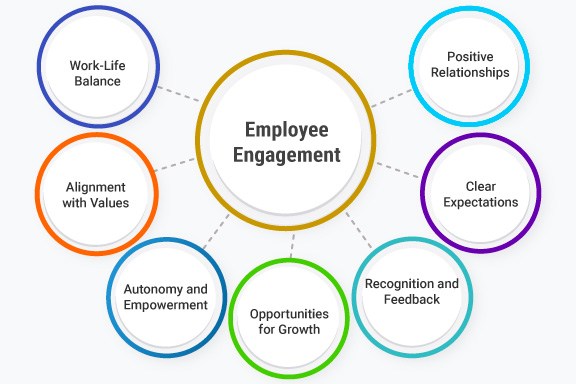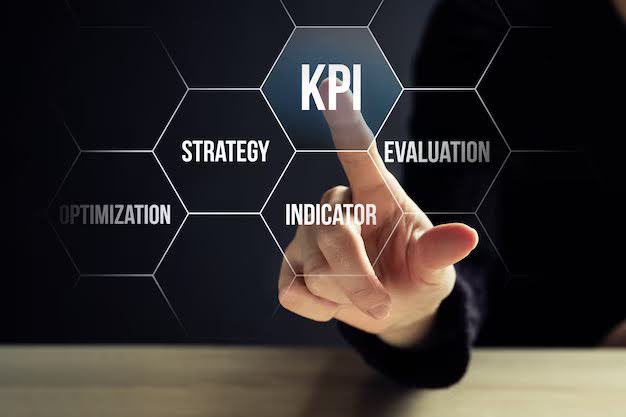Measuring employee productivity has always been a priority for businesses. Employees are the backbone of any organization, and their performance directly affects growth, profitability, and sustainability. Traditionally, companies have relied on Key Performance Indicators (KPIs) to measure productivity. These KPIs often focus on numbers, sales closed, projects completed, hours worked, or deadlines met.
While KPIs are helpful, they tell only part of the story. Imagine judging a student’s potential just by looking at their exam scores, without considering their creativity, participation, or ability to work in groups. That’s what happens when businesses measure productivity only through KPIs, they miss the bigger picture.
Employee productivity is multi-dimensional. It includes not just how much work is done but also how well it is done, how employees feel about their work, and how effectively they collaborate with others. Tracking productivity beyond KPIs provides a holistic view that helps managers and leaders make better decisions, improve employee satisfaction, and create a culture of sustainable growth.
This blog will explore:
- The limitations of relying solely on KPIs.
- Essential employee productivity metrics that go beyond numbers.
- Tools and techniques to measure productivity in a meaningful way.
- How businesses can build a more accurate and complete picture of performance.
Understanding KPIs and Their Limitations
KPIs are measurable values that indicate how effectively an employee or team is achieving specific objectives. They are typically quantitative and are easy to track, compare, and evaluate.
For example, in sales, KPIs might include:
- Number of deals closed.
- Monthly revenue generated.
- Conversion rate from leads to customers.
In customer support, KPIs could be:
- Average resolution time.
- Number of tickets resolved.
- Customer satisfaction score (CSAT).
Common KPIs Used in Measuring Employee Productivity
Some widely used KPIs across industries include:
- Output metrics: number of units produced, tasks completed, or projects delivered.
- Time-based metrics: punctuality, attendance, and hours worked.
- Efficiency metrics: turnaround time, cost per task, or resource utilization.
- Financial metrics: revenue per employee, profit contribution, or cost savings generated.
These KPIs provide quick insights into performance. However, they are not enough to paint the full picture.
Limitations of Relying Solely on KPIs
- Lack of Qualitative Insights
KPIs measure “what” was achieved but often ignore the “how.” For example, Wells Fargo once tied employee performance strictly to sales KPIs. To meet unrealistic quotas, employees created millions of fake accounts. The short-term KPIs looked good, but the scandal caused reputational and financial damage worth $3 billion in fines.1 - Potential for Misinterpretation
Numbers can be misleading when taken out of context. High output does not always mean high productivity; it may indicate overwork, stress, or a lack of focus on quality. Employees may also “game the system” by chasing metrics instead of focusing on meaningful outcomes.
This is why companies need to go beyond KPIs and incorporate holistic productivity metrics.
Essential Employee Productivity Metrics Beyond KPIs
1. Employee Engagement

Employee engagement refers to how emotionally invested and committed employees are to their work and organization. Engaged employees are motivated, proactive, and more likely to go the extra mile.
According to Gallup’s 2024 “State of the Global Workplace” report, only 21% of employees worldwide are engaged at work. Yet, companies in the top quartile of engagement report 21% higher profitability and 17% higher productivity than those in the bottom quartile.2
Tools for Measuring Engagement
- Employee engagement surveys: Questions about job satisfaction, motivation, and workplace culture.
- Pulse surveys: Short, frequent check-ins to track engagement trends over time.
- Turnover and retention rates: High turnover may indicate low engagement.
Tracking engagement helps leaders understand how employees feel about their roles and what can be improved.
2. Work Quality and Output
Quantity matters, but quality is equally important. Some quality-focused metrics include:
- Error rates or defect frequency.
- Customer feedback or satisfaction scores.
- Peer reviews and supervisor assessments.
For example, Toyota’s focus on quality over speed through its Toyota Production System (TPS) is rooted in the philosophy of Jidoka (automation with a human touch) and Just-in-Time (JIT) production. Jidoka empowers workers to halt production lines immediately when defects are detected, allowing for prompt correction and preventing errors from being passed on. This commitment to identifying and resolving issues at their source, combined with JIT’s emphasis on producing only what is needed, when it is needed, has helped Toyota achieve high levels of reliability and quality, solidifying its reputation as a leading car brand.3
Balancing Quantity and Quality
Businesses need to strike a balance. Encouraging speed without monitoring quality can lead to poor results. On the other hand, focusing only on perfection may slow down output. Productivity should combine both aspects for real effectiveness.
3. Collaboration and Team Dynamics

No employee works in isolation. Even in highly individual roles, collaboration is essential for problem-solving, innovation, and achieving long-term goals. Poor teamwork often leads to duplicated efforts, communication breakdowns, and missed deadlines.
Google’s famous Project Aristotle found that the most effective teams weren’t necessarily composed of the smartest people, but rather those with high levels of psychological safety, dependability, structure and clarity, meaning, and impact. Psychological safety, defined as the ability to take interpersonal risks without fear of negative consequences, emerged as the most critical factor for high-performing teams at Google. This highlights why measuring teamwork matters. 4
Metrics to Evaluate Collaboration
- Cross-team project success rates.
- Frequency and quality of knowledge-sharing sessions.
- Employee feedback on collaboration effectiveness.
- Use of collaborative tools like Slack, Microsoft Teams, or project management platforms.
A strong team dynamic boosts not only productivity but also morale and creativity.
4. Time Management and Utilization

Employees often struggle not with “working too little” but with working on the wrong things. Many employees spend some of their time on low-value tasks such as unnecessary meetings or excessive emails.
Tools for Measuring Time Efficiency
- Time-tracking software (e.g., Toggl, Clockify).
- Project management tools (e.g., Asana, Trello, ClickUp).
- Calendar and scheduling analysis to see how time is allocated.
Efficient time management ensures employees deliver meaningful work without burnout.
Tools and Techniques for Measuring Employee Productivity
Here is the overview of AI Tools and software that are used for measuring employee productivity:
- Hubstaff and Time Doctor: Track time, activity levels, and project progress.
- Slack Analytics: Provides data on communication and responsiveness.
- Microsoft Viva Insights: Offers workplace productivity analytics.
- Asana/Trello: Task and project management tracking.
Benefits of Using Technology for Tracking
- Real-time data for informed decision-making.
- Reduction of manual tracking errors.
- Clear visibility into workloads and project bottlenecks.
- Ability to analyze long-term trends in productivity.
According to a McKinsey study, companies that adopt AI-driven productivity tools see up to 20–30% improvement in efficiency due to better task allocation and reduced administrative work.
Qualitative Methods for Assessment
1. Surveys and Feedback Mechanisms
Anonymous surveys allow employees to share honest feedback about workload, challenges, and engagement. Deloitte research shows that companies with regular feedback systems have 14.9% lower turnover rates than those without them. 5
2. Performance Reviews and One-on-Ones
Face-to-face or virtual check-ins create opportunities to discuss achievements, struggles, and development goals. These conversations provide context that numbers alone cannot. For instance, an employee’s dip in performance may be due to personal challenges or lack of resources, not lack of effort.
Recap of the Importance of Comprehensive Productivity Metrics
KPIs are useful, but they cannot capture the full complexity of employee productivity. To build a truly effective workplace, businesses need to look beyond numbers and include engagement, quality, collaboration, and time management.
Encouragement to Adopt a Holistic Approach
By combining quantitative KPIs with qualitative insights, leaders gain a balanced view of performance. This approach not only boosts results but also improves employee satisfaction, retention, and workplace culture.
Final Thoughts
A productive workforce is not just about “how much” gets done but also “how well” and “at what cost.” By tracking diverse productivity metrics, companies can foster a healthy, motivated, and high-performing environment that benefits both employees and the business.
FAQs
1. What are employee productivity metrics?
Employee productivity metrics are measurements used to evaluate how effectively employees perform their tasks. They include both quantitative (e.g., tasks completed) and qualitative (e.g., engagement, collaboration) indicators.
2. Why should companies look beyond KPIs?
KPIs provide only numerical insights and can miss important factors like employee morale, work quality, or teamwork. Looking beyond KPIs ensures a more accurate and holistic understanding of productivity.
3. How can employee engagement be measured?
Engagement can be tracked using surveys, feedback sessions, pulse checks, and turnover rates. High engagement usually indicates higher productivity and job satisfaction.
4. What tools can businesses use to track productivity?
Popular tools include project management platforms (Asana, Trello), time-tracking apps (Toggl, Hubstaff), and AI-powered analytics solutions (Microsoft Viva Insights).
5. How can companies balance quality and quantity in productivity?
By setting clear performance standards, monitoring both output and quality, and providing regular feedback. Encouraging employees to focus on meaningful outcomes rather than just speed also helps.
6. Are qualitative methods as important as quantitative ones?
Yes. Numbers show trends, but qualitative methods like feedback, one-on-ones, and performance reviews provide context and insights that numbers cannot. Both are essential for accurate measurement.
7. Can measuring productivity harm employees?
If done poorly, yes. Over-tracking can create stress and reduce trust. The key is to use productivity metrics as tools for improvement, not surveillance or punishment.
Citations/References
- https://en.wikipedia.org/wiki/Wells_Fargo_cross-selling_scandal ↩︎
- https://www.gallup.com/394373/indicator-employee-engagement.aspx ↩︎
- https://www.researchgate.net/publication/294459660_Lessons_from_Toyota’s_long_drive ↩︎
- https://blog.haiilo.com/blog/team-communication-key-takeaways-from-googles-project-aristotle/ ↩︎
- https://www.deloitte.com/global/en.html ↩︎


